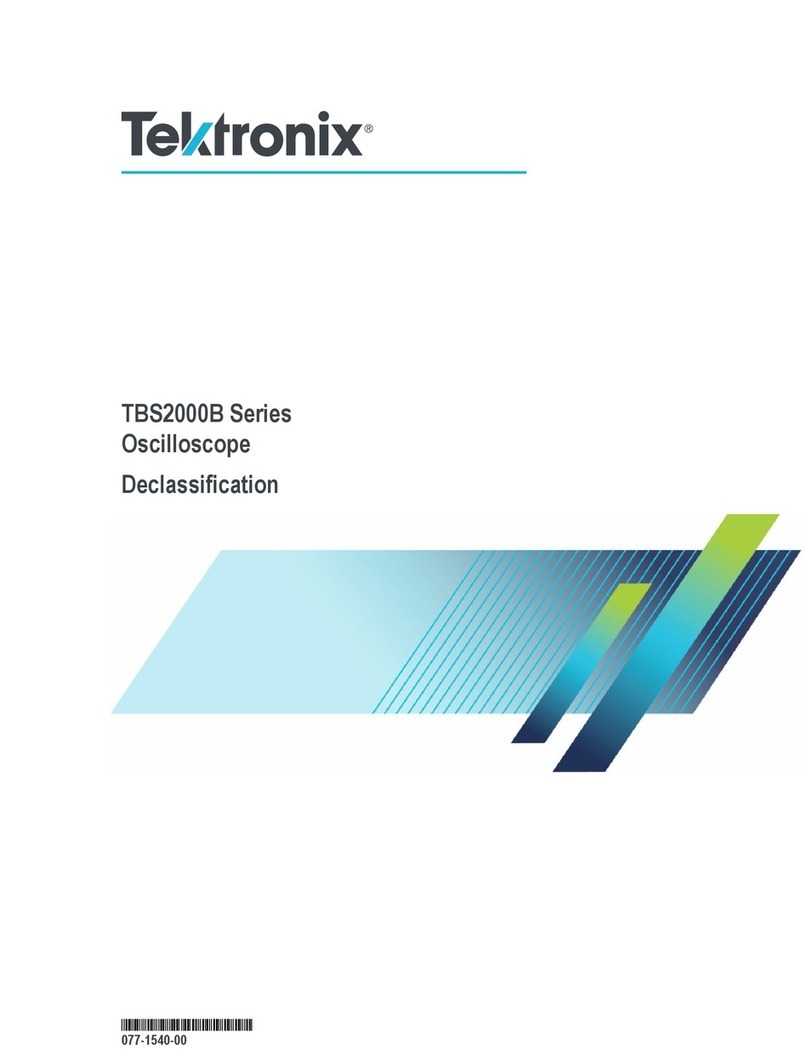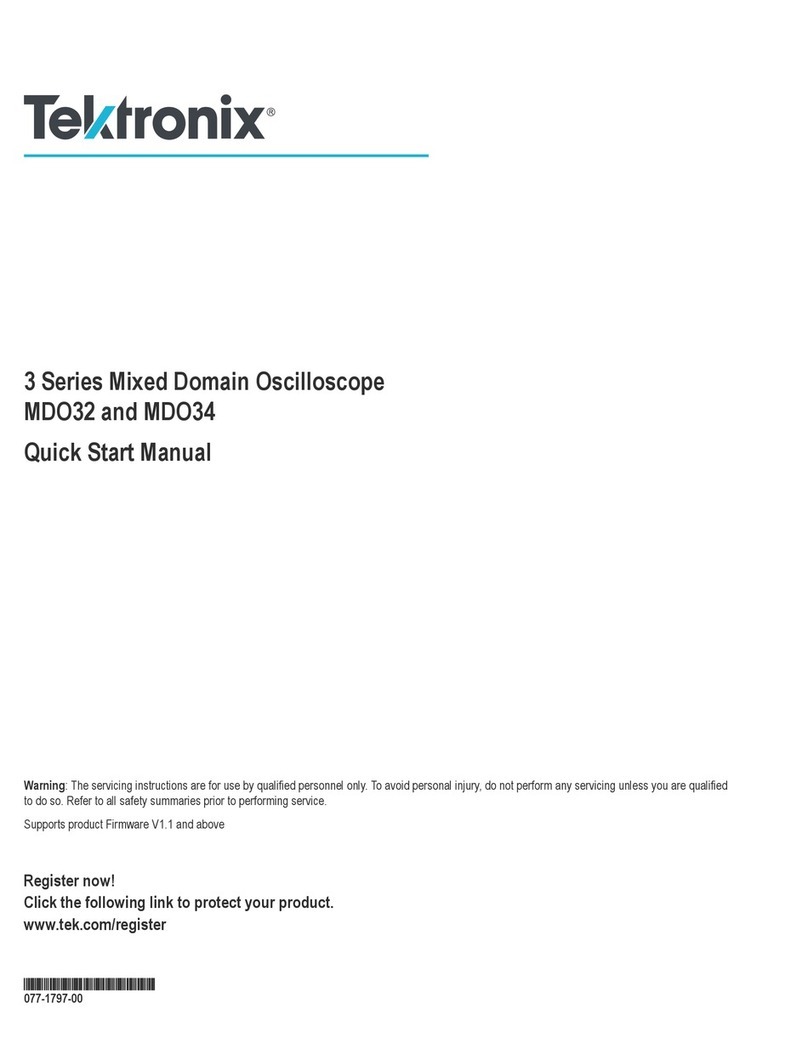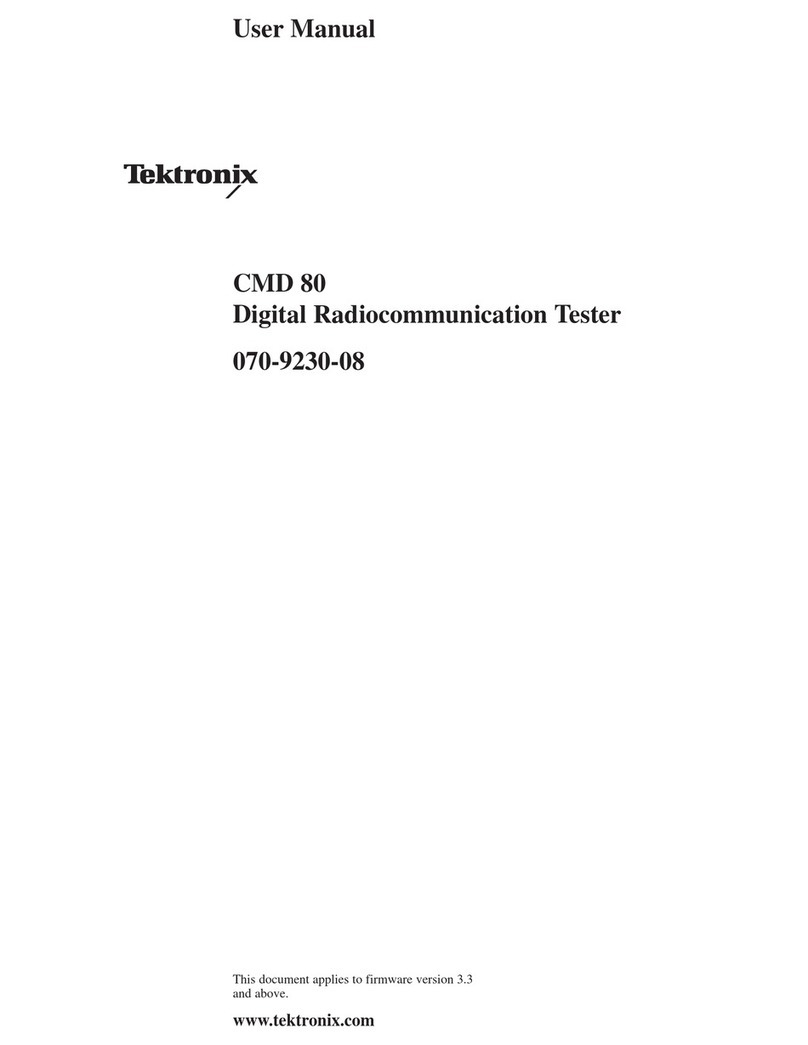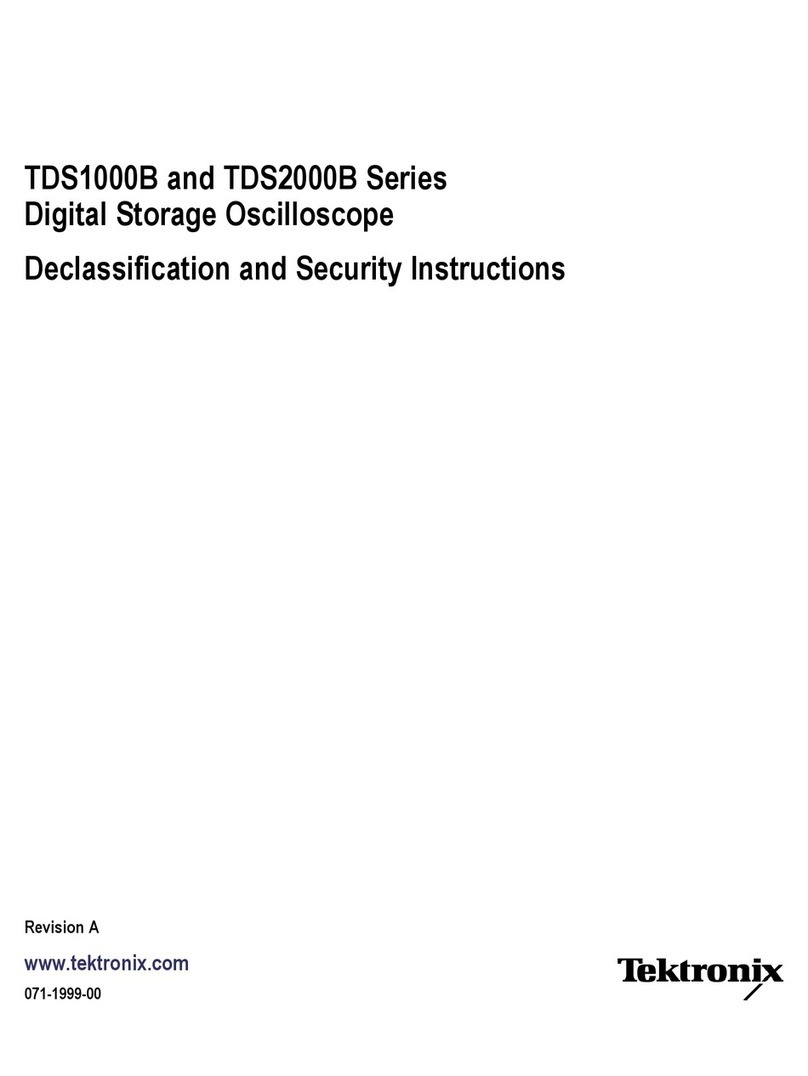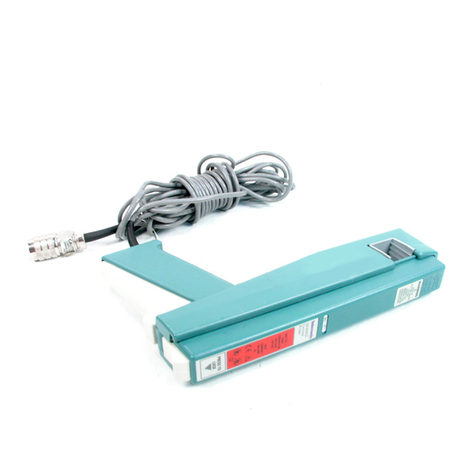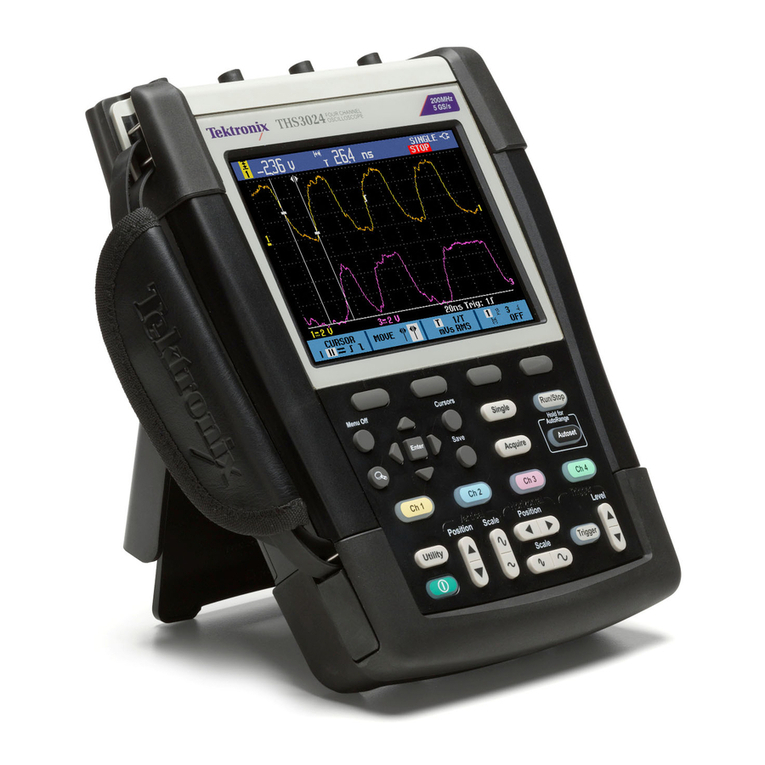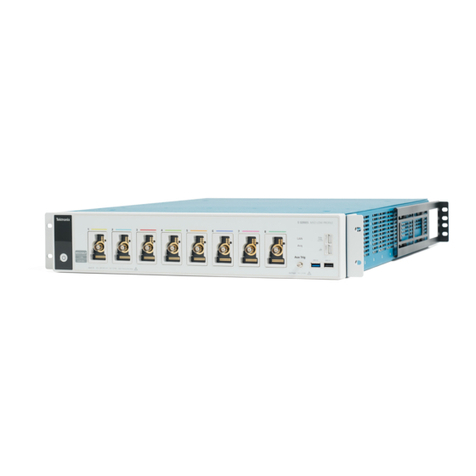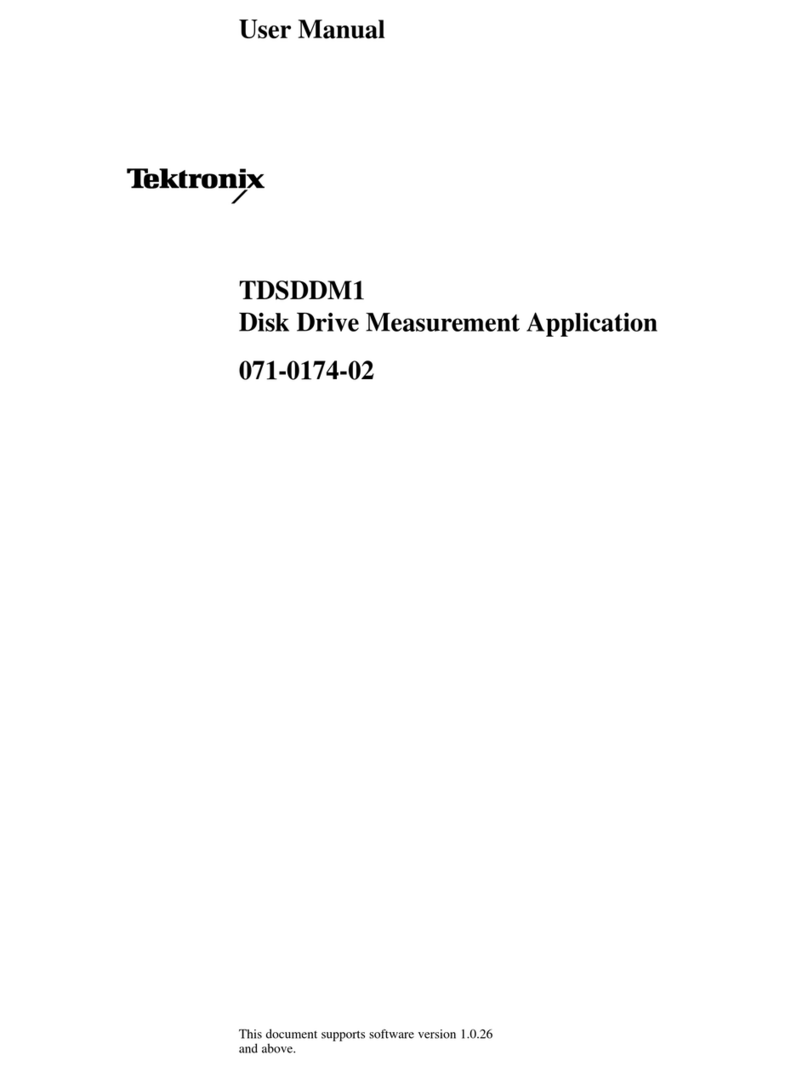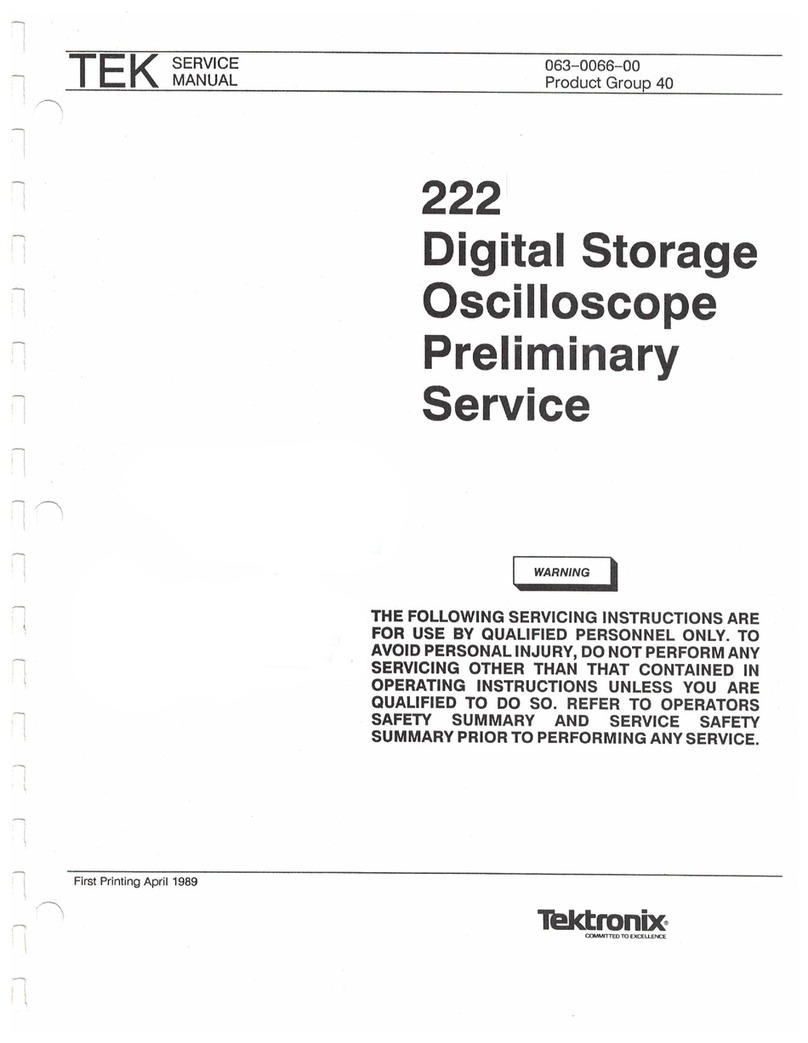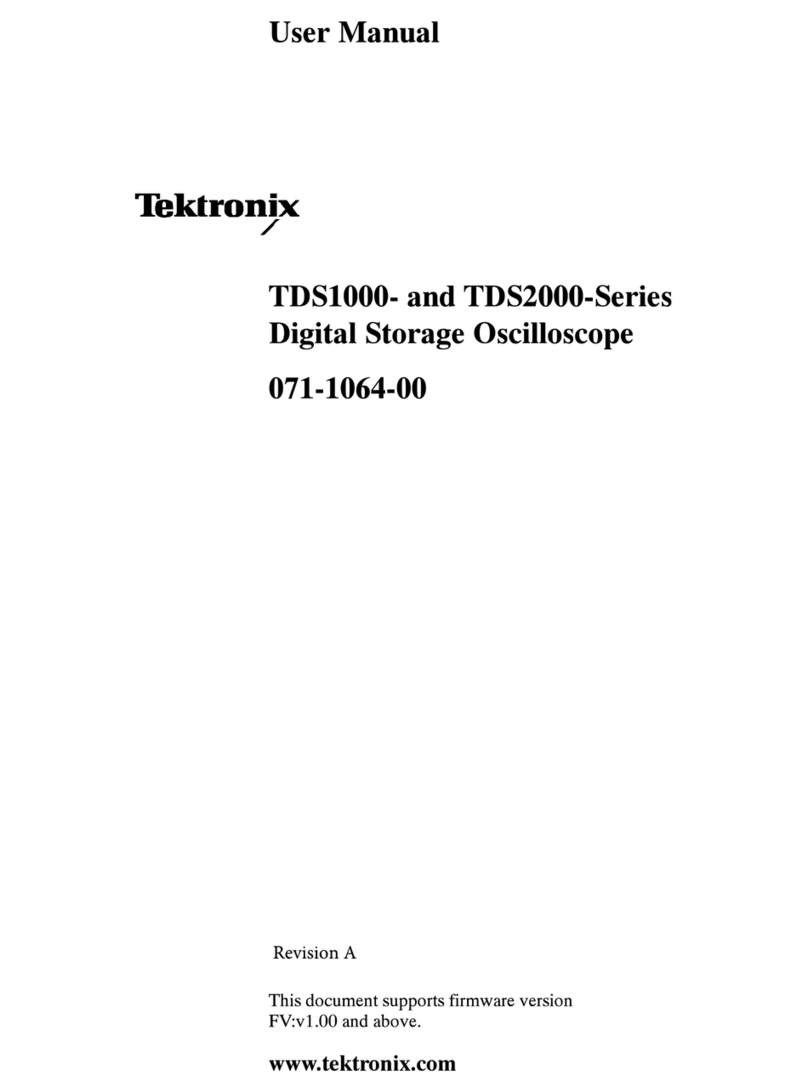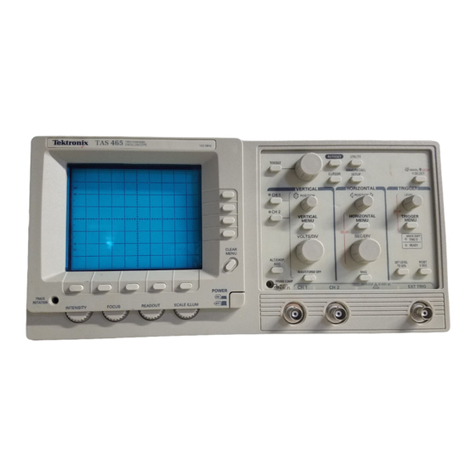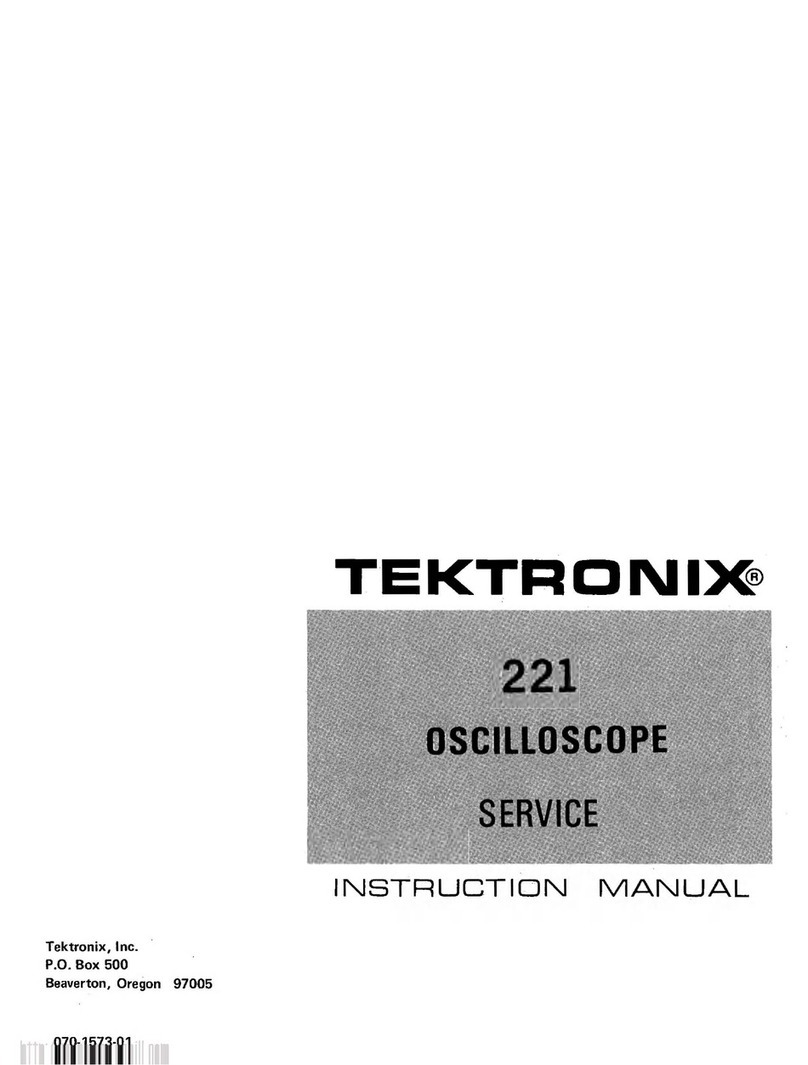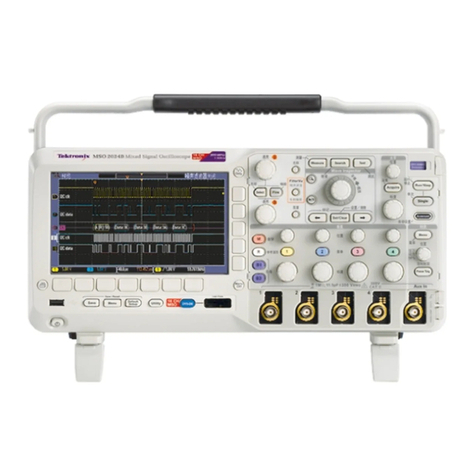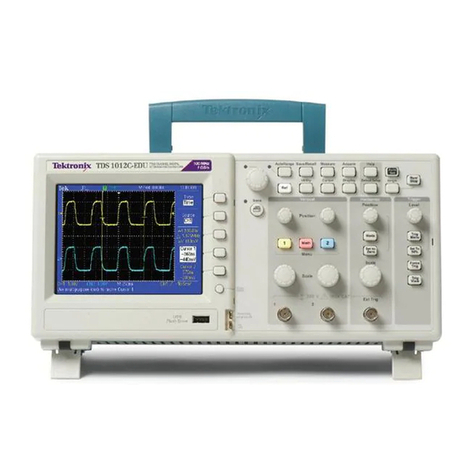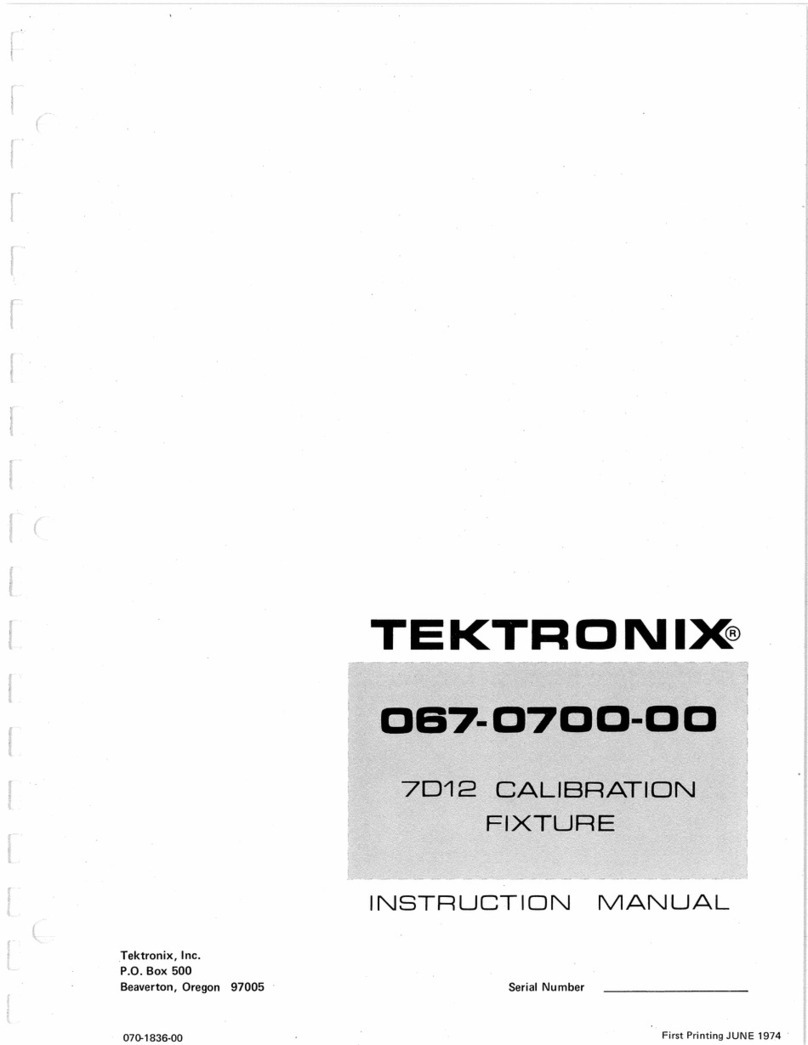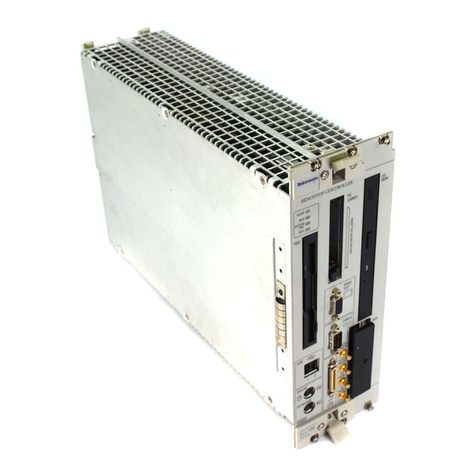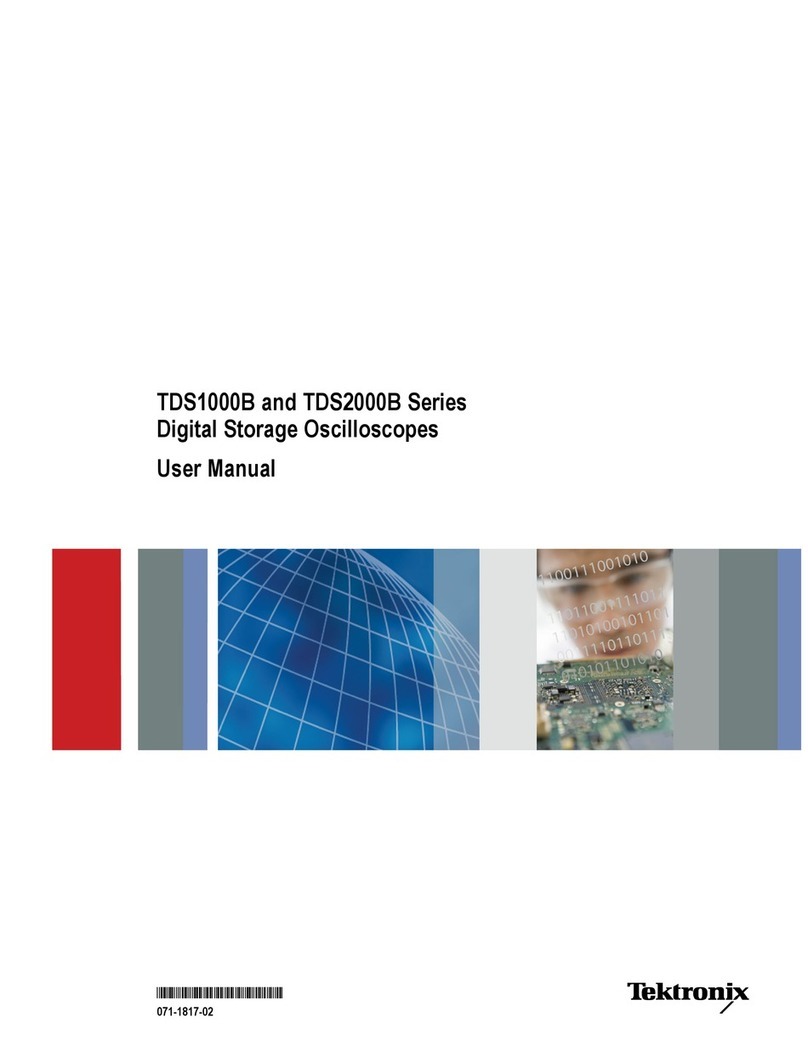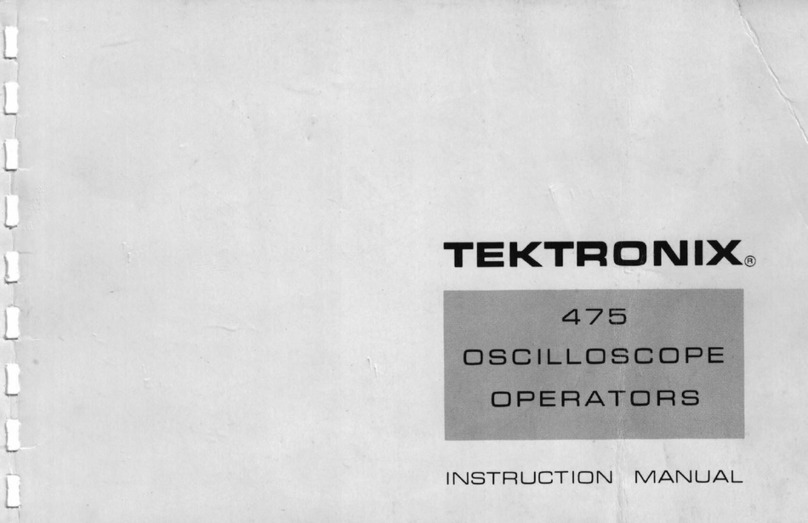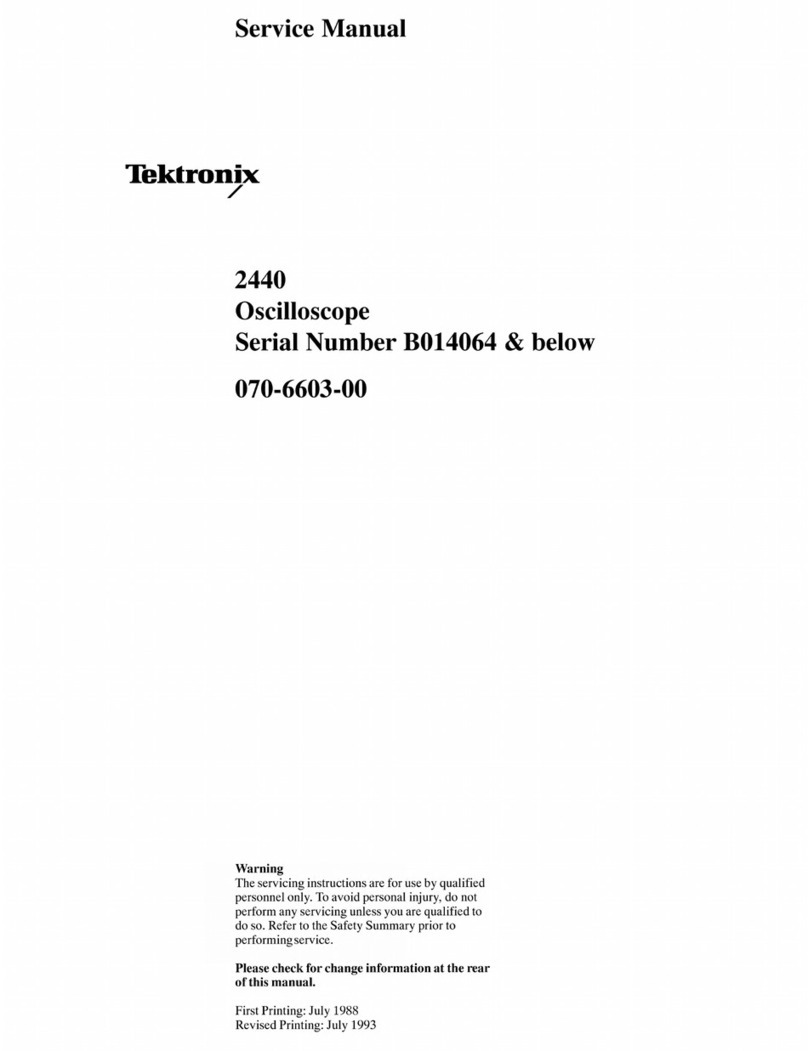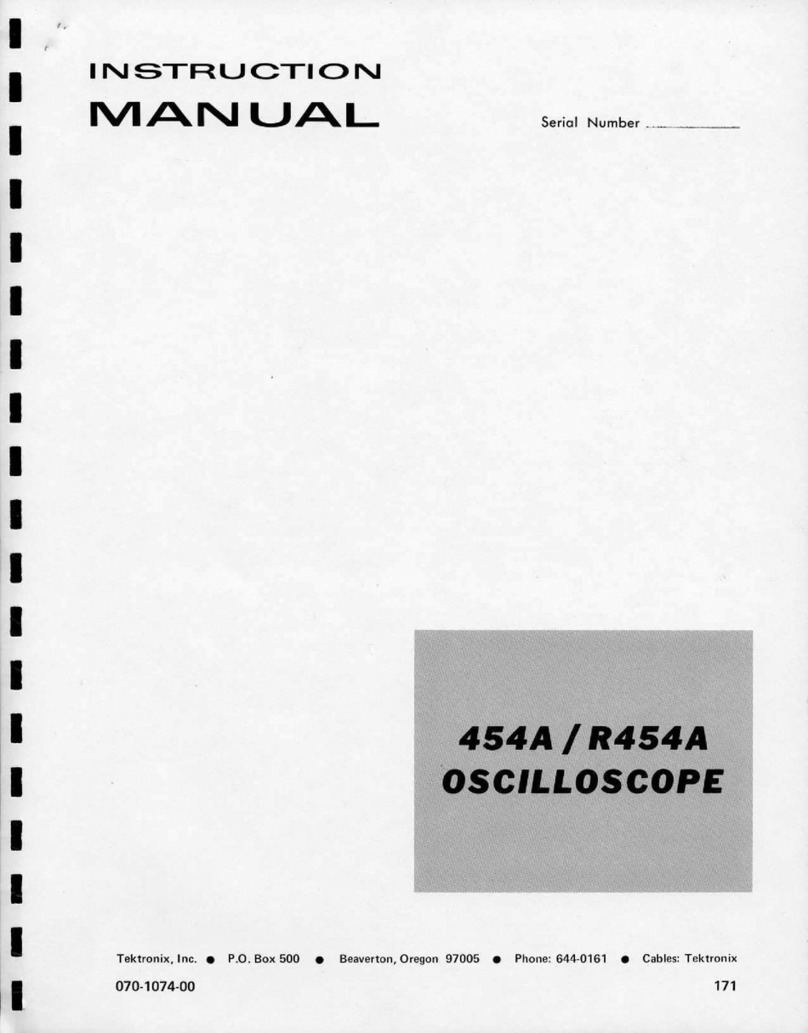2440 Service
LIST OF ILLUSTRATIONS
Figure Page
The 2440 Digital Oscilloscope................................................................................................. viii
1- 1 Dimensional drawing
..............
................................................................................................. 1-24
2- 1 LI E VOLTAGE SELECTOR, line fuse, and power cord receptacle...................:
....................
2-1
3- 1 2440 simplified block diagram.................................................................................................. 3-3
3-2 Simplified Memory Map of the 2440........................................................................................ 3-18
3-3 System Clock waveforms......................................................................................................... 3-37
3-4 Simplified Peak Detector block diagram...................................................................-........... 3-47
3-5 Simplified CCD architecture..................................................................................................
.
3-49
3-6 Trigger Logic Array Control Data Byte
.............................
...................................................... 3-53
3-7 Jitter correction waveforms....................................................................................................... 3-57
3-8 Readout State Machine flow chart................................................ 3-71
3-9 Vertical Vector Generator.......................................................................................
................
3-73
3-10 DC Restorer.............................................................
.
.............................................................
3-78
3-11 GPIB data flow diagram........................ 3-81
3-12 GPIB three-wire handshake state diagram
.............................................................................
3-82
3-13 Video Option waveforms...........................................................................................................3-87
3-14 Video Option field-sync identification...................................................................... 3-88
3-15 ' PWM Regulator and Inverter................................................................................................. 3-94
3-16 PWM switching waveforms
...............................................
.
..................................................... 3-96
5-1 Adjustment locations for Displays 4 through 6
...........
5-4
5-2 Display 5—Vertical and Horizontal Gain, Offset, and Vector
Compensation adjustment pattern......................................................................................... 5-5
5-3 Display 6—Integrator Time adjustment pattern
.........................
5-6
5-4 (S B010250 & Above) CH 1 and CH 2 CCD Clock Adjustments
(shown centered, as after doing part b).................................................................................. 5-7
5-4 (S B010249 & Below) CH 1 and CH 2 CCD Clock Adjustments
(shown centered, as after doing part b )
..............
5-8
5-5 CCD counts display and CM adjustment menu
......................................................................
5-8
5-6 CCD sides 1-4 for CH 1 before L-clock adjustment................................................................. 5-12
5-7 Sides 1 and 3 before adjustment of LIS and after.................................................................. 5-13
5-8 CH 1 with L-clocks correctly adjusted, but with stray samples............................. 5-14
5-9 Display for adjusting CCD A and T clocks
....................
5-15
5-10 Typical CH 1 and CH 2 displays after clock adjustment......................................................... 5-16
5-11 Checking sample dispersion
...........................................................
5-17
5- 12 Input and output (after adjustment) waveforms
......................................................................
5-20
6- 1 Multipin connector.................................................................................................................. 6-8
6-2 Circuit board Location............................................................................................................ 6-16
6-3 Installation sequence for installing the crt frame screws......................................................... 6-23
6-4 Trigger LED binary coding for diagnostic tests....................................................................... 6-29
6-5 Main EXT DIAG Menu............................................................................................................ 6-30
6-6 Initial troubleshooting chart
................................................................
-
..................................
6-36
6-7 Mux Test waveforms.............................................................................................................. 6-41
REV SEP 1988
